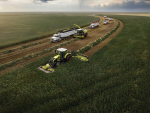OPINION: I can now say with confidence that the conversation on agricultural emissions is in for a huge shake-up.
Policymakers who have long criticised agriculture’s contribution to global warming are now realising it was a misunderstanding. The truth is New Zealand agriculture is almost certainly not adding to further warming of the atmosphere. This means farmers are already meeting their Paris Agreement obligations to keep warming under 2 degrees C, thus negating any moral argument to pay a tax under the ETS.
What has changed? Two major developments in the last three months have allowed the discussion to move past the endless debate on the physics of methane to a more substantive discussion on what agriculture must do to avoid further warming.
The first was the release of the recently created metric called GWP*. This effectively ‘zeros’ agriculture’s methane emissions at warming neutral, calculated to be on average a 0.3% annual reduction.
If emissions go up, GWP* puts a CO2 equivalent warming value on that. Also, critically, if emissions go down this metric will put a CO2 equivalent cooling value on that. Many people are still waking up to the fact that a greater than 0.3% reduction in methane emissions will result in a cooling trend. The Productivity Commission was impressed by the potential of this new metric; it said “GWP*’s greater accuracy would justify its use to guide policy decisions about relative mitigation efforts between short- and long-lived gases”.
The second development was the release of Simon Upton’s PCE Report which confirmed that a 10 - 22% reduction by 2050 will offset any warming by methane. The 10% figure assumes moderate mitigation action by other countries and would be a fair starting point, given that international action to date has been limited. A 10% reduction might sound significant, but this correlates exactly to the 0.3% annual reduction used in GWP*.
Most interesting was what the Upton report did not include. Agricultural emissions have reduced by a combined 2.9% in our last two years of available data without any taxes or forced land use change. The short story is, agricultural methane emissions can effectively be stabilised at current levels without adding to warming. How the report managed to conclude that 1.3 - 2.8 million of hectares of farm land must be converted to forestry to stop warming will be worth discussing another day.
With clear evidence that agricultural methane is not adding to warming, the question then becomes what is? Nitrous oxide is a long-lived gas that makes up about 15% of agriculture’s total emissions. Basic maths would suggest all of these N20 emissions can be offset by about 870,000ha of typical native bush. Sheep and beef farmers alone are estimated to have 1.4 million ha of woody vegetation on their properties. So it appears that NZ agriculture creates no additional warming.
Where to from here? Industry-good bodies like DairyNZ and Beef & Lamb are in an excellent position to turn the Carbon Zero Bill into a major boon for agriculture by leading in the development of a smart ETS.
A smart ETS is exactly what our industry needs to compete internationally against synthetic protein makers and the increasingly vocal anti-milk and meat brigade. It will also go a long way to improving public opinion which has been damaged by repeated attacks from activist groups with limited understanding of agricultural emissions.
The idea that agriculture contributes 46% of NZ’s emissions is only true if we use the outdated GWP100 accounting system. If NZ truly wants to be a world leader in this we must use an accurate metric that correlates to actual warming. Again, there is nothing in the Paris Agreement that would prohibit us from using more advanced metrics. Farmers should accept nothing less.
The definition of net zero emissions has not even been defined by the Government yet; both option 2 and option 3 can be considered net zero. This zero warming concept is effectively option 2 and will still comply with the Government’s 2050 target. The entire submissions process will in hindsight be viewed as a massive waste of government resources.
There is a very important point in this debate that farmers and the general public need to understand; no policy maker or climate scientist with any credibility will come out and say agriculture is adding to further warming. They have simply worked out that if they can force farmers to reduce their emissions, then the rest of the country can keep on warming for longer.
I will let you decide if you think that is fair.
• Steven Cranston is an agricultural consultant at Cranston Consulting, Hamilton.











